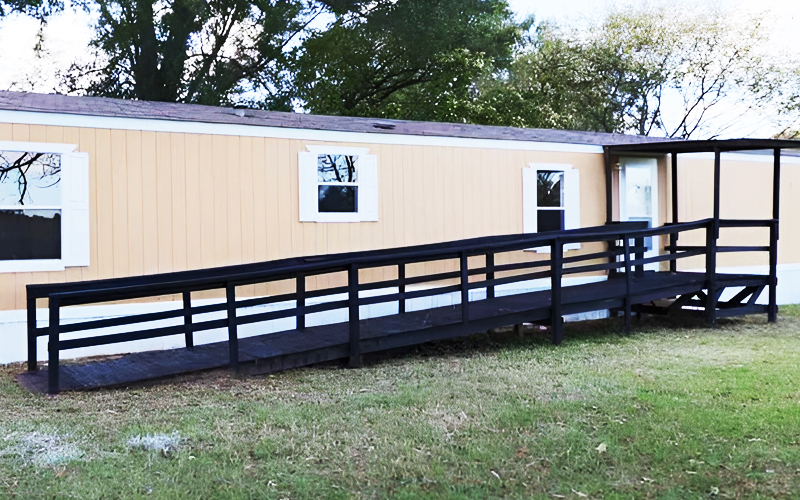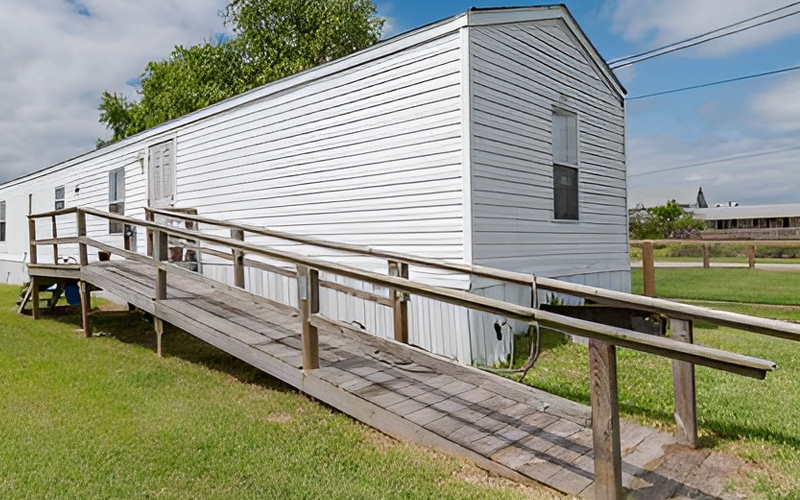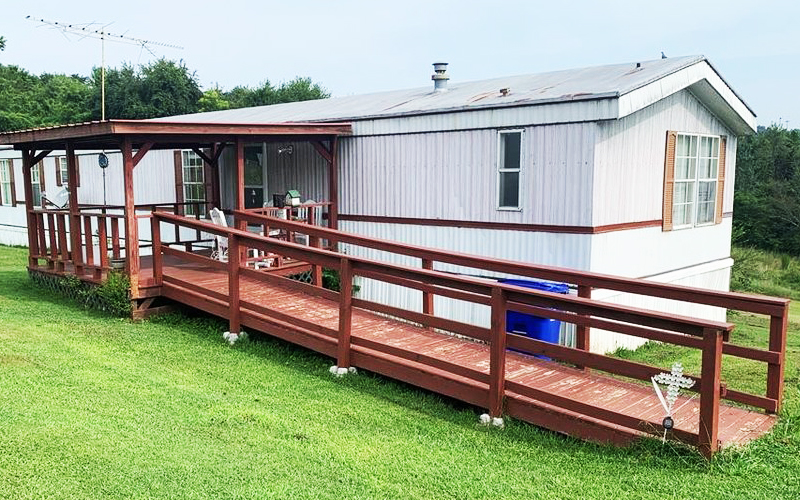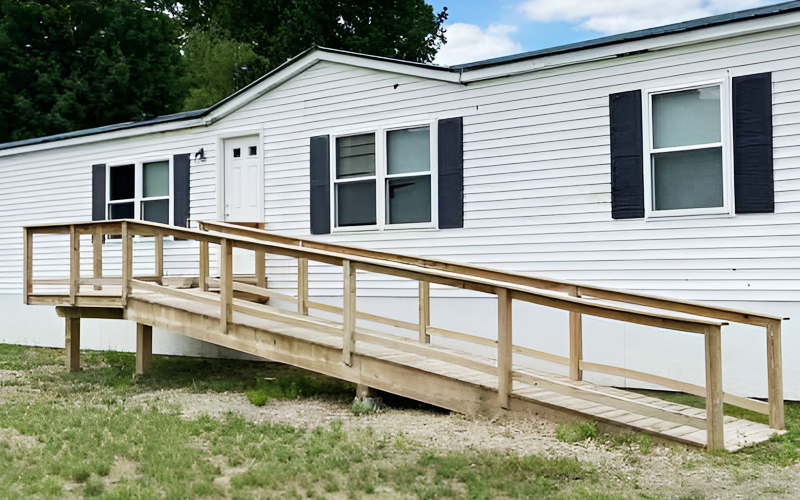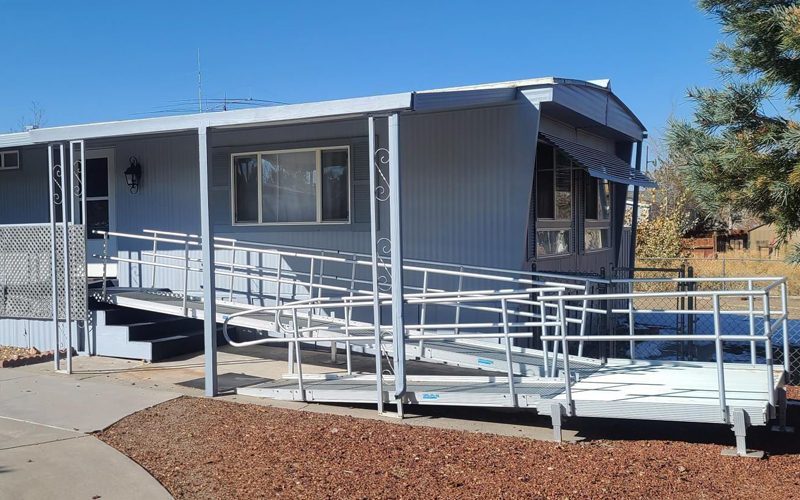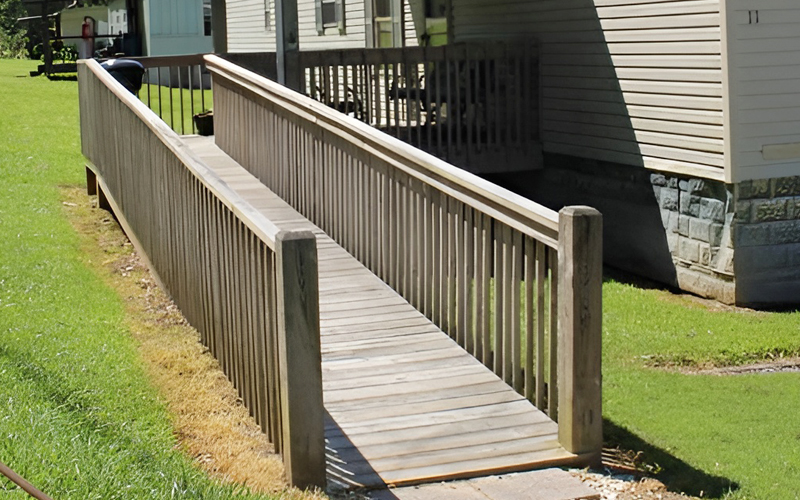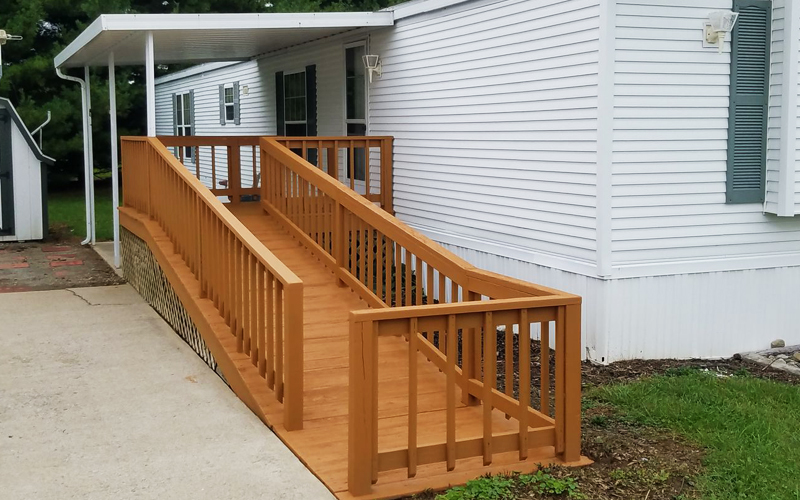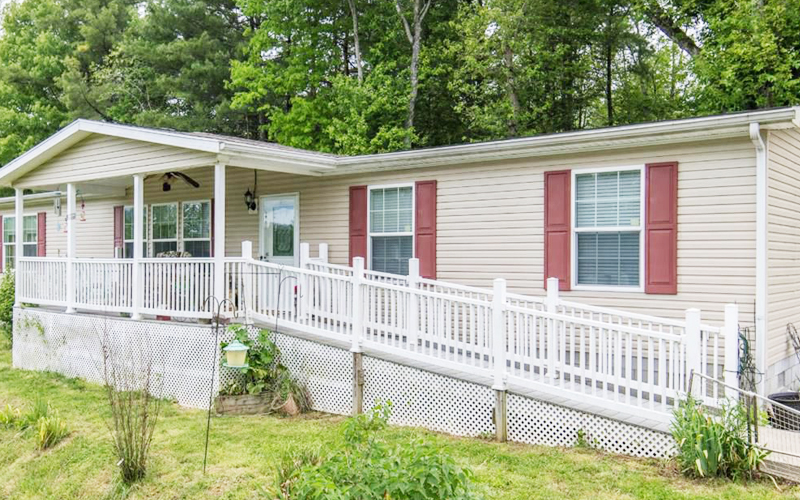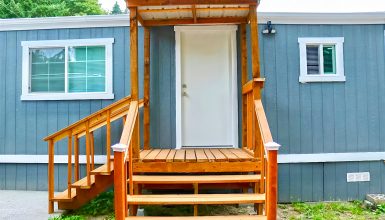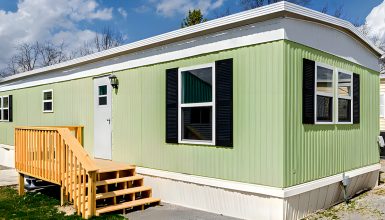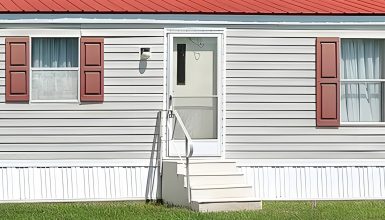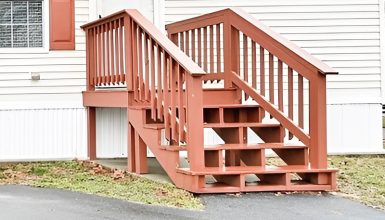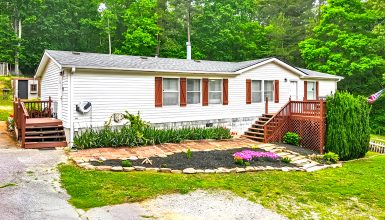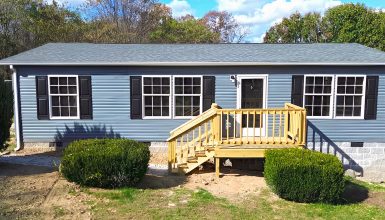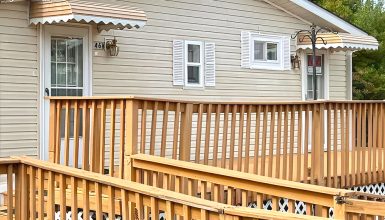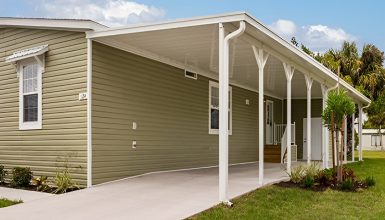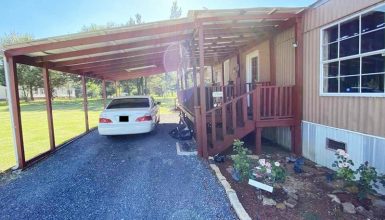As we all know, our homes are our sanctuary. They are where we seek comfort, security, and peace of mind. For those who use a wheelchair, having a home that is accessible and accommodating is especially important. And when it comes to a mobile home, this need for accessibility becomes even more critical. That’s where a wheelchair ramp comes in.
A ramp is not just a simple structure. It’s a vital element that can make a massive difference in the lives of those who use it. This comprehensive guide will explore the importance of building the right wheelchair ramp for your mobile home. So, let’s get started!
Types of Wheelchair Ramps
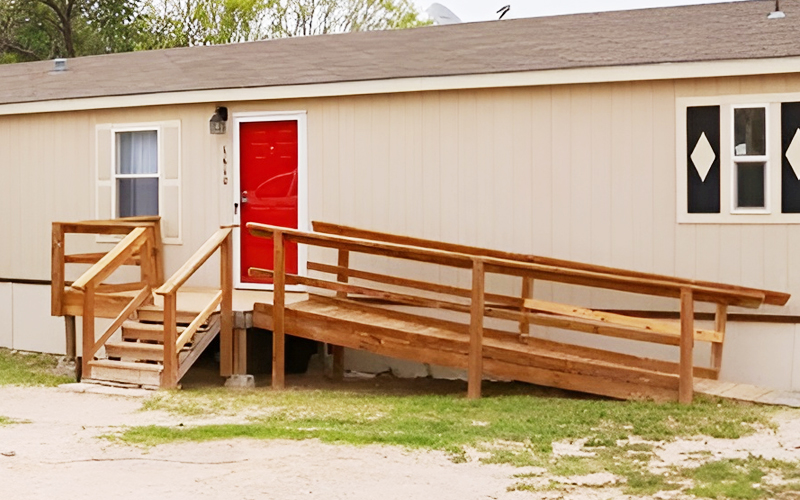
Several types of wheelchair ramps can be used for a mobile home, each with advantages and disadvantages. Here are some of the most common types of ramps:
- Portable ramp
Portable ramps are lightweight and easy to move around. They can be made of aluminum or other light materials and are ideal for temporary use. They can access mobile home parts like the front or back door or a patio.
- Modular ramp
Modular ramps are pre-fabricated ramps that can be easily assembled and disassembled. They are typically made of aluminum or steel and can be customized to fit the user’s needs. They are a good option for those requiring a more permanent ramp than a portable one.
- Wooden ramp
Wooden ramps are a good option if you are looking for a more permanent solution. They can be built to fit the specific dimensions of your mobile home. And can be stained or painted to match the exterior of your home. Wooden ramps are also typically less expensive than other types of ramps.
- Concrete ramp
Concrete ramps are a good option if you are looking for a long-lasting and durable solution. They can be customized to fit the user’s specific needs and can be built to match the exterior of your home. Concrete ramps are typically more expensive than others but require little maintenance.
- Foldable ramp
Foldable ramps are a good option if you need a ramp that can be easily transported. They can be made of aluminum or other lightweight materials and folded up for easy storage. Foldable ramps are typically less expensive than different types of ramps. They are ideal for those who need to transport the ramp frequently.
How to Choose a Wheelchair Ramp
The first step in choosing the right wheelchair ramp for your mobile home is to assess your needs. This involves considering the user’s needs, the available space for the ramp, and the ideal slope and length.
1. Identifying the needs of the user
Start by assessing the type of wheelchair or mobility device used on the ramp. Different devices require different types of ramps, so it’s crucial to choose a ramp suitable for the device used.
Next, think about the user’s physical abilities. Do they have the strength to push themselves up a steeper ramp? Or do they require a gentler slope for a smoother transition?
It’s also important to consider the user’s comfort and safety. Will they feel secure on the ramp? Will the ramp be wide enough for users to easily maneuver their wheelchair or mobility device?
Additionally, consider the user’s height and weight. These factors can impact the ideal slope and length of the ramp.
2. Slope and length of the ramp
Determining the ideal slope and length of the ramp is essential in choosing the right wheelchair ramp for a mobile home. The slope of the ramp affects how easy it is for the user to navigate. While the length of the ramp determines how much space is needed to install it.
The ideal slope of a ramp varies depending on the user’s physical abilities. And the type of wheelchair or mobility device being used. A gentler slope is typically recommended for those with difficulty pushing up a steep incline. Generally, a pitch of 1-inch rise for every 12 inches of ramp length is considered safe and manageable for most users.
The length of the ramp is determined by the height of the entryway and the available space for installation. A longer ramp allows for a gentler slope, which can be easier for some users to navigate. However, a longer ramp also requires more space for installation.
3. Available space for the ramp
The amount of available space will determine the length of the ramp, which in turn affects the slope and functionality of the ramp.
Measuring the space is vital to ensure the ramp fits perfectly and is safe. Measure the entryway’s height to determine the ramp length needed. And count the width of the entry to ensure that the ramp is wide enough for the user to navigate their wheelchair or mobility device.
It’s also important to consider the space available for installation. A portable or foldable ramp may be the best option if the area is limited. These ramps can be easily moved and stored when not in use.
In addition to the space for installation, consider the surrounding area. Is there enough space for the user to maneuver their wheelchair or mobility device at the top and bottom of the ramp? Is there anything that could obstruct the path of the ramp, such as stairs or uneven terrain?
4. Materials

Some typical materials used for wheelchair ramps include aluminum, steel, wood, and concrete. Aluminum and steel ramps are typically lightweight, making them easy to move around and install. They are also weather-resistant and require minimal maintenance.
On the other hand, wood ramps are sturdy and more affordable than other materials. They can be customized to fit the dimensions of the mobile home and can be stained or painted to match the exterior. Concrete ramps are the most durable and long-lasting option. They require very little maintenance and are suitable for heavy use.
It’s essential to consider the pros and cons of each material and how they fit with the user’s specific needs. For example, aluminum or steel may be the best option if the user requires a portable ramp. A concrete ramp may be the best choice if durability is a concern.
Other factors to consider when choosing a material for a wheelchair ramp include the cost, the weight capacity, and the installation process. Some materials, such as concrete, may require a professional installation. While others, such as aluminum, may be suitable for DIY installation.
5. Safety Features
When choosing the right wheelchair ramp for a mobile home, safety is of utmost importance. Several safety features to consider when selecting a ramp include railings, non-slip surfaces, curbs, and barriers.
Railings provide stability and support for the user as they navigate the ramp. They are vital for those who may have difficulty balancing or require assistance.
A non-slip surface is essential for preventing slips and falls, especially in wet or slippery conditions. This can be achieved through various materials, such as rubber, grooved aluminum, or textured concrete.
Curbs and barriers are essential for preventing the user from accidentally rolling off the edge of the ramp. They can also help clear the ramp of debris, snow, or ice.
Finally, it’s crucial to ensure that the ramp meets ADA (Americans with Disabilities Act) compliance standards. This includes ensuring that the ramp is wide enough for the user to comfortably navigate, that the slope is within the recommended range, and that there are no obstacles or tripping hazards.
How to Build a Wheelchair Ramp for Your Mobile Home
Installing a wheelchair ramp for a mobile home requires careful planning and attention to detail. There are several factors to consider when installing a ramp, including:
Obtaining Permits and Approvals
Permits and approvals are essential in building a wheelchair ramp for your mobile home. It’s vital to comply with local building codes and accessibility regulations. It ensures that the ramp is safe and meets all necessary requirements.
The permits and approvals required will vary depending on your location and the complexity of the installation. For example, some areas may require a building permit. While others may require approval from a local zoning board or accessibility committee.
To obtain the necessary permits and approvals, you will typically need to provide detailed plans and specifications for the ramp. This may include information such as the entryway’s height, the ramp’s slope and length, and the materials used for construction.
Step-by-step Mobile Home Wheelchair Ramp Installation
The installation process for a wheelchair ramp can vary depending on the type of ramp and the user’s specific needs. Here’s a general guide on the installation process for a wheelchair ramp:
Step 1: Clear the area. Clear where the ramp will be installed, removing any obstacles or debris.
Step 2: Prepare the surface. Ensure that the ground is level and stable. If needed, add gravel or other material to create a level surface.
Step 3: Build the frame. Construct the ramp frame using the chosen materials, ensuring it is level and securely anchored to the ground.
Step 4: Install the decking. Install the decking on top of the frame, using a non-slip surface to ensure safety.
Step 5: Add safety features. Install safety features such as railings, curbs, and barriers to ensure the user is secure while using the ramp.
Step 6: Test the ramp. Test the ramp to ensure it is safe, functional, and meets all necessary regulations and compliance standards.
It’s important to note that some ramps, such as concrete ramps, may require professional installation. If you’re uncomfortable with DIY projects, consider hiring a professional to install the ramp. This will ensure the ramp is installed safely and meets all necessary regulations and standards.
Mobile Home Wheelchair Ramp Maintenance Tips
Maintaining and caring for your wheelchair ramp is essential to ensure its longevity and safety for the user. Here are some tips on how to properly maintain and care for your ramp:
- Regular cleaning
Regularly clean your ramp to remove any dirt, debris, or leaves that may accumulate. This will help prevent slips and falls.
- Check for damage
Regularly check for any signs of damage, such as cracks or loose screws. Repair any damage immediately to prevent further wear and tear.
- Apply a sealant
Apply a sealant to protect the wood from weather damage and to extend its lifespan.
- Check for stability
Regularly check the ramp’s stability and ensure that it is still securely anchored to the ground.
- Repair or replace any damaged
If any safety features such as railings or curbs are damaged, repair or replace them immediately.
- Regular inspections
Regularly inspect the ramp to ensure it is safe and functional for the user. This may include checking the ramp’s slope, width, and height.
Conclusion
In conclusion, building or installing a wheelchair ramp for your mobile home can provide reliable accessibility and independence for the user. By carefully assessing your needs, choosing suitable materials, and installing the ramp safely and securely. It can ensure that it meets all necessary regulations and compliance standards.

